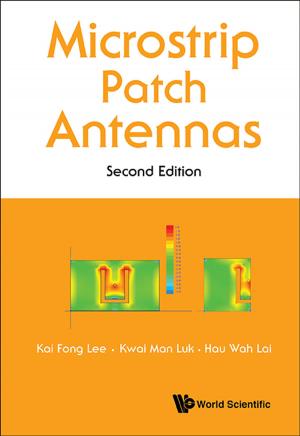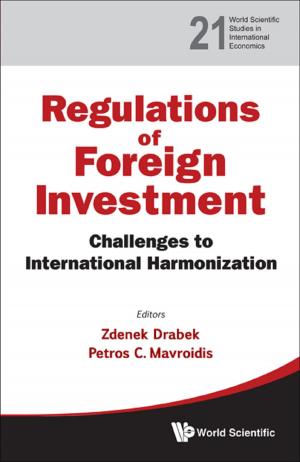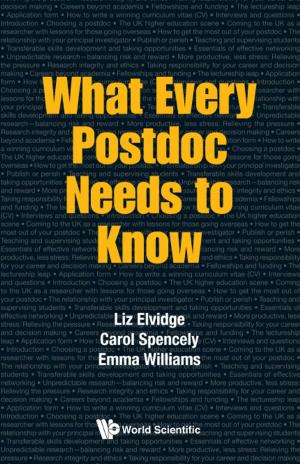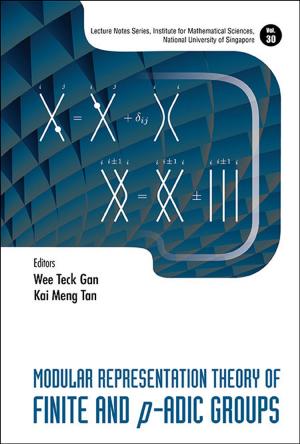| Author: | Nik Weaver | ISBN: | 9789814566025 |
| Publisher: | World Scientific Publishing Company | Publication: | January 24, 2014 |
| Imprint: | WSPC | Language: | English |
| Author: | Nik Weaver |
| ISBN: | 9789814566025 |
| Publisher: | World Scientific Publishing Company |
| Publication: | January 24, 2014 |
| Imprint: | WSPC |
| Language: | English |
Ever since Paul Cohen's spectacular use of the forcing concept to prove the independence of the continuum hypothesis from the standard axioms of set theory, forcing has been seen by the general mathematical community as a subject of great intrinsic interest but one that is technically so forbidding that it is only accessible to specialists. In the past decade, a series of remarkable solutions to long-standing problems in C*-algebra using set-theoretic methods, many achieved by the author and his collaborators, have generated new interest in this subject. This is the first book aimed at explaining forcing to general mathematicians. It simultaneously makes the subject broadly accessible by explaining it in a clear, simple manner, and surveys advanced applications of set theory to mainstream topics.
Contents:
- Peano Arithmetic
- Zermelo–Fraenkel Set Theory
- Well-Ordered Sets
- Ordinals
- Cardinals
- Relativization
- Reflection
- Forcing Notions
- Generic Extensions
- Forcing Equality
- The Fundamental Theorem
- Forcing CH
- Forcing ¬ CH
- Families of Entire Functions*
- Self-Homeomorphisms of βℕ \ ℕ, I*
- Pure States on B(H)*
- The Diamond Principle
- Suslin's Problem, I*
- Naimark's problem*
- A Stronger Diamond
- Whitehead's Problem, I*
- Iterated Forcing
- Martin's Axiom
- Suslin's Problem, II*
- Whitehead's Problem, II*
- The Open Coloring Axiom
- Self-Homeomorphisms of βℕ \ ℕ, II*
- Automorphisms of the Calkin Algebra, I*
- Automorphisms of the Calkin Algebra, II*
- The Multiverse Interpretation
Readership: Graduates and researchers in logic and set theory, general mathematical audience.
Key Features:
- A number of features combine to make this thorough and rigorous treatment of forcing surprisingly easy to follow. First, it goes straight into the core material on forcing, avoiding Godel constructibility altogether; second, key definitions are simplified, allowing for a less technical development; and third, further care is given to the treatment of metatheoretic issues
- Each chapter is limited to four pages, making the presentation very readable
- A unique feature of the book is its emphasis on applications to problems outside of set theory. Much of this material is currently only available in the primary literature
- The author is a pioneer in the application of set-theoretic methods to C*-algebra, having solved (together with various co-authors) Dixmier's “prime versus primitive” problem, Naimark's problem, Anderson's conjecture about pure states on B(H), and the Calkin algebra outer automorphism problem
Ever since Paul Cohen's spectacular use of the forcing concept to prove the independence of the continuum hypothesis from the standard axioms of set theory, forcing has been seen by the general mathematical community as a subject of great intrinsic interest but one that is technically so forbidding that it is only accessible to specialists. In the past decade, a series of remarkable solutions to long-standing problems in C*-algebra using set-theoretic methods, many achieved by the author and his collaborators, have generated new interest in this subject. This is the first book aimed at explaining forcing to general mathematicians. It simultaneously makes the subject broadly accessible by explaining it in a clear, simple manner, and surveys advanced applications of set theory to mainstream topics.
Contents:
- Peano Arithmetic
- Zermelo–Fraenkel Set Theory
- Well-Ordered Sets
- Ordinals
- Cardinals
- Relativization
- Reflection
- Forcing Notions
- Generic Extensions
- Forcing Equality
- The Fundamental Theorem
- Forcing CH
- Forcing ¬ CH
- Families of Entire Functions*
- Self-Homeomorphisms of βℕ \ ℕ, I*
- Pure States on B(H)*
- The Diamond Principle
- Suslin's Problem, I*
- Naimark's problem*
- A Stronger Diamond
- Whitehead's Problem, I*
- Iterated Forcing
- Martin's Axiom
- Suslin's Problem, II*
- Whitehead's Problem, II*
- The Open Coloring Axiom
- Self-Homeomorphisms of βℕ \ ℕ, II*
- Automorphisms of the Calkin Algebra, I*
- Automorphisms of the Calkin Algebra, II*
- The Multiverse Interpretation
Readership: Graduates and researchers in logic and set theory, general mathematical audience.
Key Features:
- A number of features combine to make this thorough and rigorous treatment of forcing surprisingly easy to follow. First, it goes straight into the core material on forcing, avoiding Godel constructibility altogether; second, key definitions are simplified, allowing for a less technical development; and third, further care is given to the treatment of metatheoretic issues
- Each chapter is limited to four pages, making the presentation very readable
- A unique feature of the book is its emphasis on applications to problems outside of set theory. Much of this material is currently only available in the primary literature
- The author is a pioneer in the application of set-theoretic methods to C*-algebra, having solved (together with various co-authors) Dixmier's “prime versus primitive” problem, Naimark's problem, Anderson's conjecture about pure states on B(H), and the Calkin algebra outer automorphism problem















